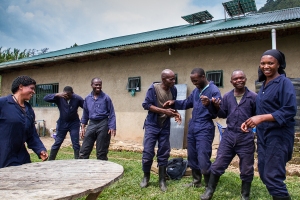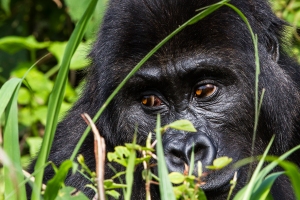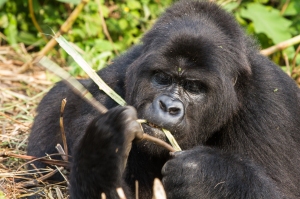It is with an air of stimulated familiarity I find myself once again in the Democratic Republic of Congo, several weeks into an extended period abroad and wondering where the past few months have gone. These aforementioned months have been spent largely in NJ, and amidst the enjoyment of being home I was busy with grant writing and graduate school applications; following, this current adventure will probably be my last before delving into the intricacies of a PhD program.
My grant writing efforts were largely focused on an African Grey Parrot (AGPs) conservation project. Working closely with John and Terese Hart (with whom I worked before in DRC in 2011), along with several other collaborators including the NGO World Parrot Trust, we are initiating an long-term effort to monitor AGPs in the Hart’s park. I will begin this project in earnest in a couple weeks’ time, when I will fly to Kindu in Maniema province from Goma in North Kivu province. In order to do that, however, I will first need to fly to Goma from Butembo, a densely-populated, sprawling city several hundred kilometers north of Goma. Finally, to arrive in Butembo, I will need to take a slow 6-hour jarring car ride from the remote village of Katoyo where one can find the Gorilla Rehabilitation and Conservation Education (GRACE) Center, where I currently reside.
My presence at this sanctuary is almost 100% courtesy of Sonya Kahlenberg, a former professor of mine at Bates who is now the executive director of the GRACE non-profit organization. I am very lucky to spend about 5 weeks time here in this mountainous region of North Kivu, where political and social insecurity can make travel difficult at times. Fortunately now is not one of those times, and I am free to enjoy mountain scenery, as well as the company of a great local staff and 13 magnificent Grauer’s gorillas.

Some of the gorilla caregivers and maintenance/security prepare their welcome ceremony for incoming international visitors.
Grauer’s gorillas (Gorilla beringei graueri), the eastern lowland gorillas, are one of four definitive subspecies of gorilla, and one which can only be found worldwide in the eastern DRC. They are critically endangered throughout their now restricted range, mostly due to habitat destruction, poaching, and general mal-effects associated with human encroachment. GRACE is a center for orphaned Grauer’s gorillas who have been confiscated from airports, inside backpacks, and whatever else smugglers can think of to sneak young gorillas out of DRC to sell and make money. I highly encourage you to visit the GRACE webpage (www.gracegorillas.org) to learn more about the organization and its 6-year history, its extensive community involvement, and the gorillas’ rescue and rehabilitation.
While at GRACE, I have been helping out with photography, gorilla behavioral research, and putting the finishing touches on the hotwire fence which encompasses the new 24-acre forested enclosure for the gorillas. This new enclosure will be the largest for captive gorillas worldwide—a significant feat, no doubt, but one which somehow pales in comparison to the real reason the enclosure was built. The gorillas here are captive, yes, to the extent that their movements are restricted and they are largely cared for by humans, but the real goal of the GRACE project is to reintroduce individual gorillas to wild populations. The forested enclosure is an aim at an “intermediate” stage in this process, to help ensure that the gorillas here can function as real wild gorillas and stay healthy on their own. Reintroduction is a conservation tactic which will probably pick up steam and publicity as more and more pressures are put on the very survival of different species worldwide. Why is reintroduction relevant and perhaps necessary? With wild populations of Grauer’s gorillas numbering in the low thousands and decreasing, there may not be enough individuals to ensure the survival of the species. It’s that simple.

Female Ndjingala shows off her striking eyes, a feature which makes her one of the easier gorillas here to ID.

Pinga, the matriarchal leader of the GRACE group, eats the interior pith of a stalk of elephant grass, a staple food for this ca. 200lb. vegetarian.
Well…the ultimate logic may be that simple, but the process certainly is not. There are many complications with the reintroduction process—one of which is that the idea is new enough for there not to be a real process yet—and I will write more about this in my next update.
Unfortunately I cannot make this post as detailed as I’d like to with many more pictures, however I’m restricted by the rather limited bandwidth of our internet here. Still, I’m happy to write a short update (with a couple photos to boot), and—recalling my 3 months in DRC in 2011, when I had no internet connection for 2.5 of those months—hope to bring everyone up to date as often as is realistic. For now, I wish everyone a happy spring, and hope to hear from you!


Andrew, thanks so much for another fascinating post. We just donated to GRACE to help support its wonderful efforts. –ELC
LikeLike